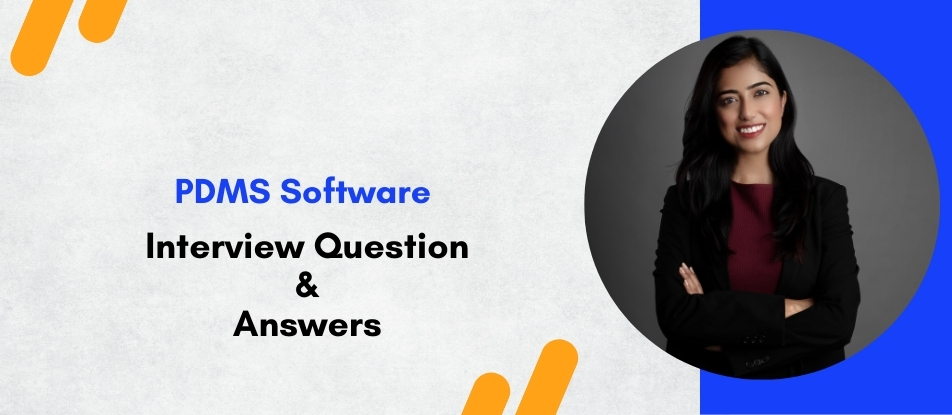
The PDMS Software Course equips learners with advanced skills in plant design using AVEVA’s 3D modeling environment. It covers equipment layout, piping design, structural modeling, HVAC, and drafting essentials. Participants gain expertise in specifications, catalogs, and clash detection, while mastering deliverables such as isometric drawings and material reports. Ideal for engineers and designers, the program prepares professionals to work on large-scale industrial projects with accuracy, efficiency, and industry-standard compliance.
PDMS Software Training Interview Questions Answers - For Intermediate
1. What types of equipment can be modeled in PDMS?
PDMS allows modeling of both static and rotating equipment such as pumps, compressors, vessels, heat exchangers, reactors, and tanks. Each piece of equipment can be created from primitives like cylinders and boxes or imported from vendor models. This flexibility ensures that equipment layouts are accurate and aligned with process requirements.
2. How are supports handled in PDMS?
Pipe supports and equipment supports in PDMS are modeled using standardized catalogues and specifications. The software automatically links supports to the respective components and adjusts when routing changes occur. This ensures that load distribution, stability, and structural compliance are maintained throughout the design.
3. What is the role of attributes in PDMS objects?
Attributes in PDMS store key information about each object, such as dimensions, material, weight, and specifications. These attributes drive intelligent modeling, reporting, and clash detection. By embedding attributes, PDMS ensures that the model is data-rich and suitable for downstream engineering and procurement activities.
4. How does PDMS support structural design?
The Structural (STRU) module in PDMS is used to design steel frameworks, platforms, ladders, and handrails. It provides tools to create beams, columns, trusses, and plates using standard sections from catalogues. Structural designs can be checked for clashes with piping and equipment, ensuring integrated plant layouts.
5. What is the significance of World (WORL) in PDMS hierarchy?
World (WORL) is the topmost element in the PDMS database hierarchy that organizes the entire project environment. It contains sub-databases for different disciplines, such as equipment, piping, and structure. WORL ensures that all project elements are linked and provides a structured approach to project data management.
6. How are specifications customized in PDMS?
Specifications in PDMS can be customized by project administrators to align with client standards. This involves defining allowed component types, pressure ratings, sizes, and materials. By tailoring specifications, PDMS ensures that designs are consistent, meet regulatory codes, and minimize non-compliance risks.
7. What is the function of the PARAGON module in PDMS?
PARAGON is a specialized module used to create and manage catalogues and specifications. It defines the geometry, parameters, and rules governing equipment, piping, and structural components. PARAGON ensures that all design elements follow standardized definitions, enabling accuracy and consistency across projects.
8. How are isometric drawings produced in PDMS?
PDMS can generate piping isometric drawings directly from the 3D model using the ISODRAFT module. These drawings include details such as dimensions, material specifications, welds, and bill of materials. Automatic updates ensure that changes in the 3D model are reflected in the isometrics, improving efficiency and accuracy.
9. What are the benefits of PDMS in multi-discipline projects?
PDMS allows multiple disciplines—mechanical, piping, structural, and electrical—to work simultaneously within the same database. Real-time data sharing ensures better coordination, reduced design conflicts, and improved productivity. This collaborative environment is a major advantage over isolated design tools.
10. How does PDMS manage large project databases?
For large projects, PDMS divides the database into multiple zones and sub-zones. This segmentation improves performance by allowing users to load only relevant portions of the model. Database management tools also support backup, restoration, and version control to maintain data integrity.
11. What is a primitive in PDMS?
Primitives are basic geometric shapes such as cylinders, cones, boxes, and spheres that are used to build complex 3D objects. Equipment and structural components can be created by combining and modifying primitives. This approach provides flexibility in modeling non-standard or vendor-specific items.
12. How does PDMS ensure compliance with engineering standards?
Compliance is maintained through specifications, catalogues, and rule-based modeling. The system restricts users to approved components, materials, and sizes, preventing deviations from codes. Regular validation checks and automated clash detection further enhance adherence to engineering and safety standards.
13. How does PDMS handle design revisions?
PDMS provides tools to mark, compare, and document revisions in the model. Any changes made are tracked with revision codes, which are automatically reflected in drawings and reports. This ensures transparency in design updates and supports effective change management throughout the project lifecycle.
14. What is the purpose of the DESIGN module in PDMS?
The DESIGN module is the core workspace where most modeling activities are performed. It provides tools for placing equipment, routing piping, and adding structural elements. The module is linked to catalogues and specifications, ensuring that the design is accurate, consistent, and standards-compliant.
15. How does PDMS contribute to project cost and schedule control?
By providing accurate 3D models, material reports, and clash-free designs, PDMS minimizes rework and delays during construction. The system ensures that material take-offs are precise, reducing procurement errors and excess costs. Its integrated environment also accelerates design reviews and approvals, improving overall project delivery timelines.
PDMS Software Training Interview Questions Answers - For Advanced
1. How does PDMS manage intelligent connectivity between piping components?
PDMS ensures intelligent connectivity by automatically linking each piping component to its adjoining elements during routing. When a designer places a valve or fitting, PDMS checks the specification and ensures that the correct end-preparation and orientation are applied. If the pipe size or specification changes, PDMS automatically adjusts connected components to maintain continuity. This intelligent connectivity reduces design errors and ensures that the model remains consistent and constructible, eliminating mismatched components that would otherwise cause serious problems during fabrication and installation.
2. What is the importance of the Design Explorer in PDMS?
The Design Explorer in PDMS acts as a powerful navigation tool that allows users to quickly browse and manipulate the hierarchical structure of the project database. Advanced users rely on it to locate elements, review attributes, and modify structures without manually searching through extensive model data. It also supports filtering and grouping, enabling focused work on specific systems or zones. This significantly improves productivity in large projects by simplifying database management and reducing the time spent searching for objects within the model.
3. How does PDMS contribute to digital twin development?
PDMS provides the foundation for creating digital twins by producing intelligent, data-rich 3D models of process plants. Every object in PDMS carries attributes such as material, specification, and maintenance data, which can be linked to operational systems. These enriched models serve as digital twins when integrated with real-time monitoring systems, supporting predictive maintenance, asset management, and operational optimization. By bridging the design and operational phases, PDMS plays a critical role in extending plant life cycles and improving efficiency.
4. How is structural steel design optimized within PDMS?
PDMS optimizes structural steel design by providing access to international section catalogs and allowing designers to create complex frameworks using beams, trusses, and supports. It ensures that steel elements are placed with exact alignment and connectivity, while clash detection prevents interference with piping and equipment. Advanced features like automatic positioning of ladders, platforms, and handrails improve constructability. Integration with analysis tools ensures that structural models can be validated for strength and compliance with safety codes, making PDMS effective for both design and engineering validation.
5. What role does PDMS play in modular plant design?
Modular plant design involves building plants as pre-fabricated units or skids, which are then transported and assembled onsite. PDMS supports this by allowing designers to group equipment, piping, and structures into modules that can be isolated, exported, and reused. This reduces duplication, enhances standardization, and simplifies logistics planning. Modular design in PDMS improves project schedules by enabling parallel fabrication and site preparation, while ensuring that the modules fit seamlessly when assembled onsite, thereby reducing overall project risk.
6. How does PDMS integrate with procurement and supply chain management?
PDMS provides accurate bills of materials and material take-offs that directly feed into procurement systems. Each modeled component has detailed attributes such as weight, material grade, and specification, which can be exported to ERP or MRP systems like SAP. This integration ensures that procurement teams order the correct components in the right quantities, minimizing delays and reducing material wastage. Accurate alignment of design with procurement improves supply chain efficiency, reduces costs, and ensures that critical items are available on time for construction.
7. What is the significance of zones in PDMS for large-scale projects?
Zones in PDMS act as logical partitions of the plant model, allowing large projects to be divided into manageable areas. Each discipline can create and work within its own zones without affecting other teams, which improves performance and reduces the risk of database corruption. Zones also support selective loading, where only the relevant portion of the model is opened, enhancing efficiency in large models. For construction, zones correspond to plant areas or units, helping align design data with real-world project execution phases.
8. How does PDMS support compliance with HSE (Health, Safety, and Environment) requirements?
PDMS plays a critical role in ensuring compliance with HSE standards by enabling designers to visualize plant layouts in 3D and assess safety aspects such as equipment accessibility, emergency escape routes, and hazardous area classifications. By simulating real-world scenarios, designers can ensure that safety distances are maintained, fire-fighting systems are properly located, and walkways remain clear of obstructions. This proactive approach minimizes risks during operation and ensures compliance with safety regulations, reducing liabilities and improving plant safety.
9. How are HVAC and ducting systems handled in PDMS?
PDMS includes specialized tools for designing HVAC and ducting systems, allowing designers to route ducts, place equipment such as fans and chillers, and integrate them with the overall plant design. The software ensures that ducts follow specifications for size, material, and pressure class. Clash detection ensures that ducts do not interfere with piping or structural elements. Integration with building management systems ensures that HVAC layouts meet environmental requirements, while accurate drawings and material reports support smooth fabrication and installation.
10. How does PDMS support change management in design projects?
Change management in PDMS is supported through revision tracking, model comparison tools, and controlled workflows. When a change is made, it can be logged with revision codes and linked to engineering change notices. Comparison reports help identify differences between two versions of the model, providing transparency for audits and approvals. Automated updates to drawings and reports ensure that changes propagate consistently across the project. This systematic approach ensures that changes are well-documented, minimizing errors and reducing rework.
11. How does PDMS improve project visualization for stakeholders?
PDMS allows stakeholders to view highly realistic 3D models of the plant, enabling better understanding of layouts, equipment positioning, and spatial constraints. Visualization tools allow for walk-throughs and fly-throughs, simulating operator movement and equipment access. This helps non-technical stakeholders, such as project managers and clients, to validate designs without needing detailed engineering knowledge. Early visualization improves decision-making, reduces miscommunication, and increases client confidence in the project’s progress and accuracy.
12. What role does PDMS play in reducing construction rework?
Rework in construction is often caused by design errors, clashes, or incomplete documentation. PDMS reduces this risk by ensuring clash-free, specification-driven models that automatically generate accurate deliverables. The system’s ability to link 3D models with drawings and reports ensures consistency, eliminating discrepancies that might otherwise go unnoticed until construction. By resolving design issues virtually, PDMS significantly reduces rework, saving both time and cost during the execution phase of the project.
13. How does PDMS address the challenge of maintaining data integrity in global projects?
In global projects, where multiple teams may be working across different time zones, maintaining data integrity is critical. PDMS addresses this challenge through centralized databases, controlled user access, and revision management. Admin tools define strict permissions to prevent unauthorized edits, while regular backups ensure recoverability. Data replication and synchronization features allow distributed teams to work efficiently without compromising accuracy. By ensuring a single source of truth, PDMS maintains data integrity across global teams, supporting efficient and reliable collaboration.
14. How are cable trays and electrical systems modeled in PDMS?
PDMS includes capabilities for modeling electrical systems, particularly cable trays and supports. Designers can route trays along structural frameworks, define sizes and materials, and ensure compliance with project standards. Integration with other systems ensures that cable trays avoid clashes with piping and ducts. By including electrical layouts in the same environment, PDMS ensures that all disciplines are fully coordinated, reducing the risk of conflicts during construction and ensuring accurate planning for cable pulling and terminations.
15. How does PDMS support lifecycle management of industrial plants?
Beyond design, PDMS contributes significantly to the entire lifecycle of an industrial plant. Its data-rich 3D models can be handed over to operations teams as digital assets, supporting maintenance, inspections, and modifications. By linking the model with asset management systems, plant operators can track the status and history of equipment, plan upgrades, and manage spare parts. This extends the value of PDMS beyond the design phase, ensuring that the investment in detailed engineering continues to deliver benefits throughout the plant’s operational life.
Course Schedule
| Dec, 2025 | Weekdays | Mon-Fri | Enquire Now |
| Weekend | Sat-Sun | Enquire Now | |
| Jan, 2026 | Weekdays | Mon-Fri | Enquire Now |
| Weekend | Sat-Sun | Enquire Now |
Related Courses
Related Articles
Related Interview
Related FAQ's
- Instructor-led Live Online Interactive Training
- Project Based Customized Learning
- Fast Track Training Program
- Self-paced learning
- In one-on-one training, you have the flexibility to choose the days, timings, and duration according to your preferences.
- We create a personalized training calendar based on your chosen schedule.
- Complete Live Online Interactive Training of the Course
- After Training Recorded Videos
- Session-wise Learning Material and notes for lifetime
- Practical & Assignments exercises
- Global Course Completion Certificate
- 24x7 after Training Support


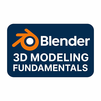

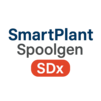
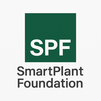
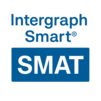


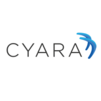




 Join our Live Instructor-Led online classes delivered by industry experts
Join our Live Instructor-Led online classes delivered by industry experts